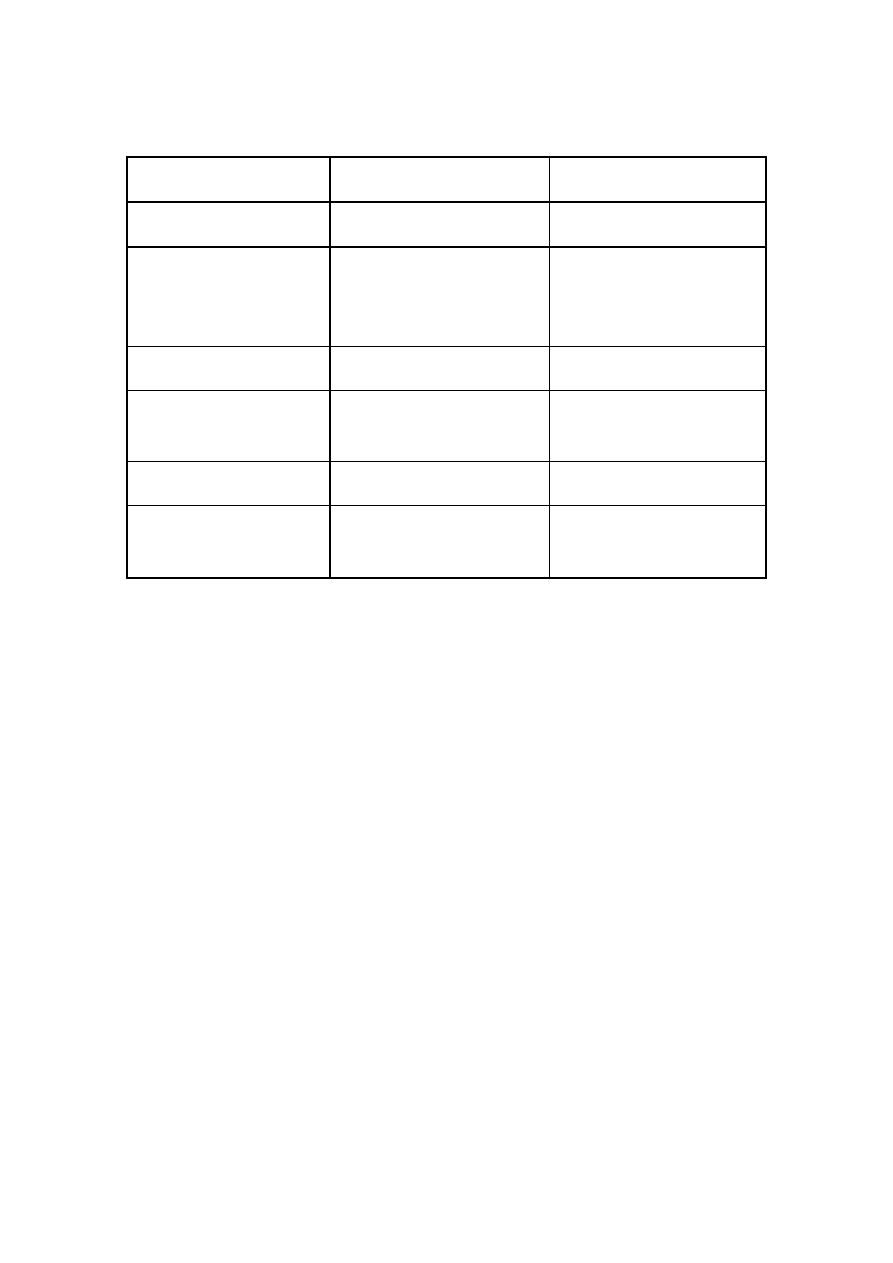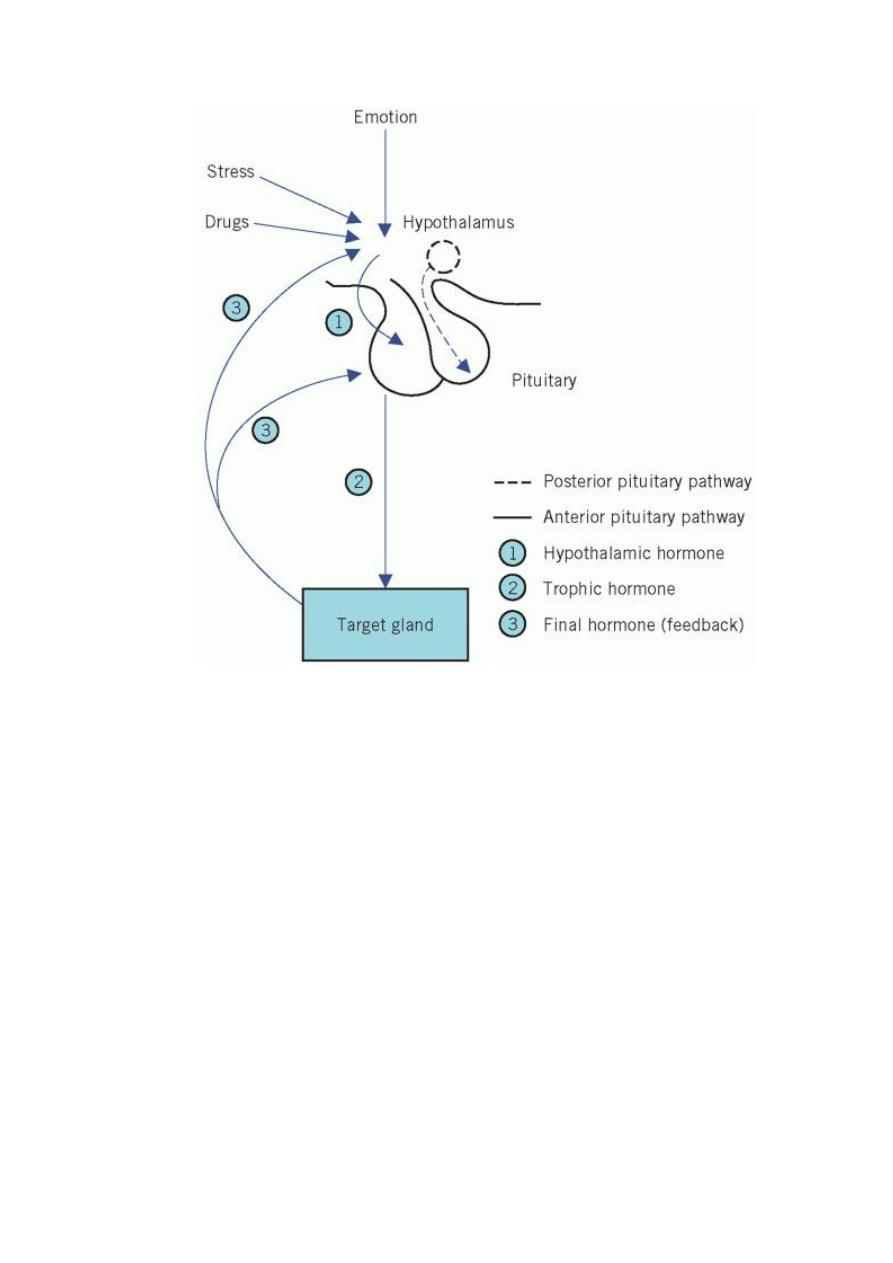
1
Hormones
Are chemical substances (Messengers) produced by specific ductless
glands ( Endocrine Glands)
They are transported directly into the circulation affecting specific
responsive tissues ( The Target Tissues ) where they regulate the
metabolic processes.
General functions of hormones: -
1- Regulation of metabolism: - Hormones affect the metabolism of
carbohydrate, protein, lipid, and minerals directing their synthesis,
storage, mobilization and utilization according to needs of the
body.
2- Growth: - The growth of bones, viscera, and several of tissues is
under the control of hormones.
3- Homeostasis:- hormones help the maintenance of internal
environment.
4- Behavior: - Hormones have an important role in behavior, fear,
depression, and sex behaviors are to several neural hormonal
factors.
5- Reproduction:- Reproductive organs are highly sensitive to
hormones.
Hormone Effects
Mechanisms:
1. By influencing the rate of synthesis of enzymes and other proteins.
2. By affecting the rate of enzymatic catalysis.
3. By altering the cell membrane permeability.

2
Characteristic features of hormone classes
Group I
Group II
1- Solubility
lipophilic
hydrophilic
2- Type
Steroids(iodothyronin,
T3, T4)
Polypeptide, proteins,
glycoproteins
(catecholamines).
3- Transport protein
yes
No
4- Plasma half life
t1/2
long(hours,days)
Short(minutes).
5-Receptor
Intracellular
plasma membrane
6- Mediator
Receptor hormone
complex
cAMP, Ca,
phosphatidylinositol.
Classification of Hormones
A: According to chemical composition:-
1. Polypeptide:
ex: GH, ACTH, PRL, Insulin
2. Glycoprotein:
ex: FSH, LH, TSH
3. Steroids (derived from cholesterol):
ex: Adrenal steroids, Sex hormones
4. Amino acids:
Thyroid hormones ( T4 and T3) and Catecholamines are derived from
Tyrosine .
B: According to the location of hormone receptors and the nature of
the signal used to mediate hormone action :
Group I : Hormones that bind to intracellular receptors :-
Examples:
Sex hormones: Estrogens, Progestins
Adrenal steroids: Glucocorticoids, Mineralocorticoids.
Thyroid hormones: ( T4 and T3) , Calcitriol.

3
Group II : Hormones that bind to cell surface receptors :-
This group is subdivided into 4 subgroups according to the nature of
intracellular messenger ( Second Messenger):-
A: The 2nd messenger is cAMP :-
Examples:
Alpha 2 -Adrenergic catecholamines
Beta -Adrenergic catecholamines
ACTH (Adrenocorticotropic hormone)
TSH (Thyroid – Stimulating hormone)
FSH ( Follicle –Stimulating hormone)
LH ( Luteinizing Hormone)
LPH ( Lipotropin)
MSH ( Melanocyte –Stimulating hormone)
PTH ( Parathyroid hormone )
Calcitonin
B: The 2nd messenger is cGMP:-
Examples:
ANP ( Atrial natriuretic factor)
NO ( Nitric oxide )
C: The 2nd messenger is Calcium , Phosphatidyl inositol or both:-
Examples:
Alpha 1- adrenergic catecholamines
Oxytocin
TRH (Thyroytopin releasing hormone)
GnRH (Gonadotropin releasing hormone)
ADH
Oxytocin

4
D: The 2nd messenger is a kinase or phosphatase cascade:-
Examples:
GH
Insulin
PRL
Erythropoietin
Chorionic somatomammotropin ( CS )
Insulin like growth factors ( IGF-I, IGF-II )
Basic principles for hormone action:
1. The responsive target cell for any given hormone contain specific
receptors which are specialized proteins capable of binding the hormone
molecule with very high specificity and affinity.
The hormone receptors could be present on the cell surface or within the
cell.
2. The binding of the hormone to it’s receptors result in the formation of
intra cellular ( or depresses) some characteristic biochemical activity of
the target tissue.
The 2nd messenger could be cAMP, cGMP, Ca2+, phosphatidyl
inositol or a kinase or phosphatase cascade.
With Group I hormones:
The hormone receptor complex itself becomes the 2
nd
messenger.
Feedback control
1. Negative Feedback control

5
Control of pituitary hormone secretion
2. Positive feedback control
In certain circumstances, hormones exert positive feedback control.
Estrogen and progesterone are required for the acute bust of LH secretion
(LH Surge) that result in ovulation and follicular luteinization and for
further production of these hormones.
HORMONE ASSAY
Radioimmunoassay (RIA):
Based on the competition for a specific binding protein of radiolabeled
hormone with unlabeled hormone. The binding protein may be a specific
antibody, membrane receptor or serum transport protein.
The unlabeled present either a standard or an unknown competitively
displaces the labeled hormone resulting in an increase in radioactivity in
the unbound fraction.

6
RIA methods are more sensitive than most bioassays since they
permit detection of hormone concentration less than 1ng/ml.
Hypothalamic Hormones:-
Anantomy:
Hypothalamus is a portion of central nervous system,
located at the base of the brain just above the pituitary gland.
Hypothalamus secretes releasing hormones, vasopressin (ADH) and
oxytocine. Releasing hormones are short peptide hormones released from
hypothalamic nerve fiber endings and reach the anterior lobe of the
pituitary through the special portal system that connect the hypothalamus
and anterior lobe.
The function of hypothalamic releasing hormones is to regulate the
secretion of anterior pituitary hormones. Hypothalamic hormones are
secreted under control of higher brain centers, anterior pituitary hormone
and final target hormones (feedback regulation).
HYPOTHALAMIC
HORMONE
PITUITARY
HORMONE
RELEASED
TARGET HORMONE
RELEASED
1-Thyrotropin
releasing hormone
(TRH).
TSH
T3&T4
2-Corticotropin
releasing hormone
(CRH).
ACTH
Hydrocortisone.
3-Gonadotropin
releasing hormone
(GnRH).
LH, FSH.
Androgens,estrogens
& progestins.
4-Growth hormone
releasing hormone
(GRH).
GH
IGF (insulin like
growth factor).
5-Growth hormone
release
inhibiting
hormone(GHRIH).
Inhibit GH, T3, and
T4.
IGF1

7
6-Prolactin release
inhibiting hormone.
Inhibit release of
prolactin.
Neurohormones.
